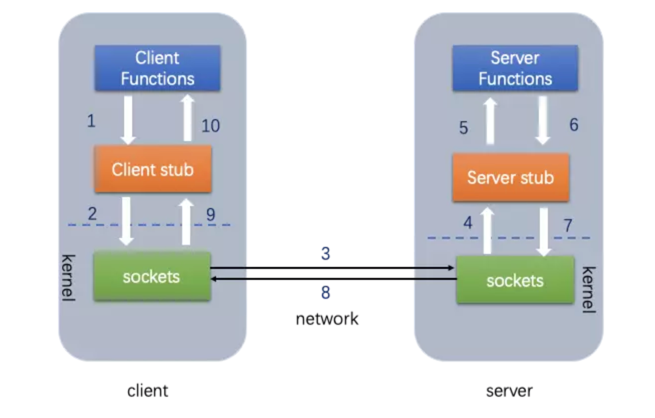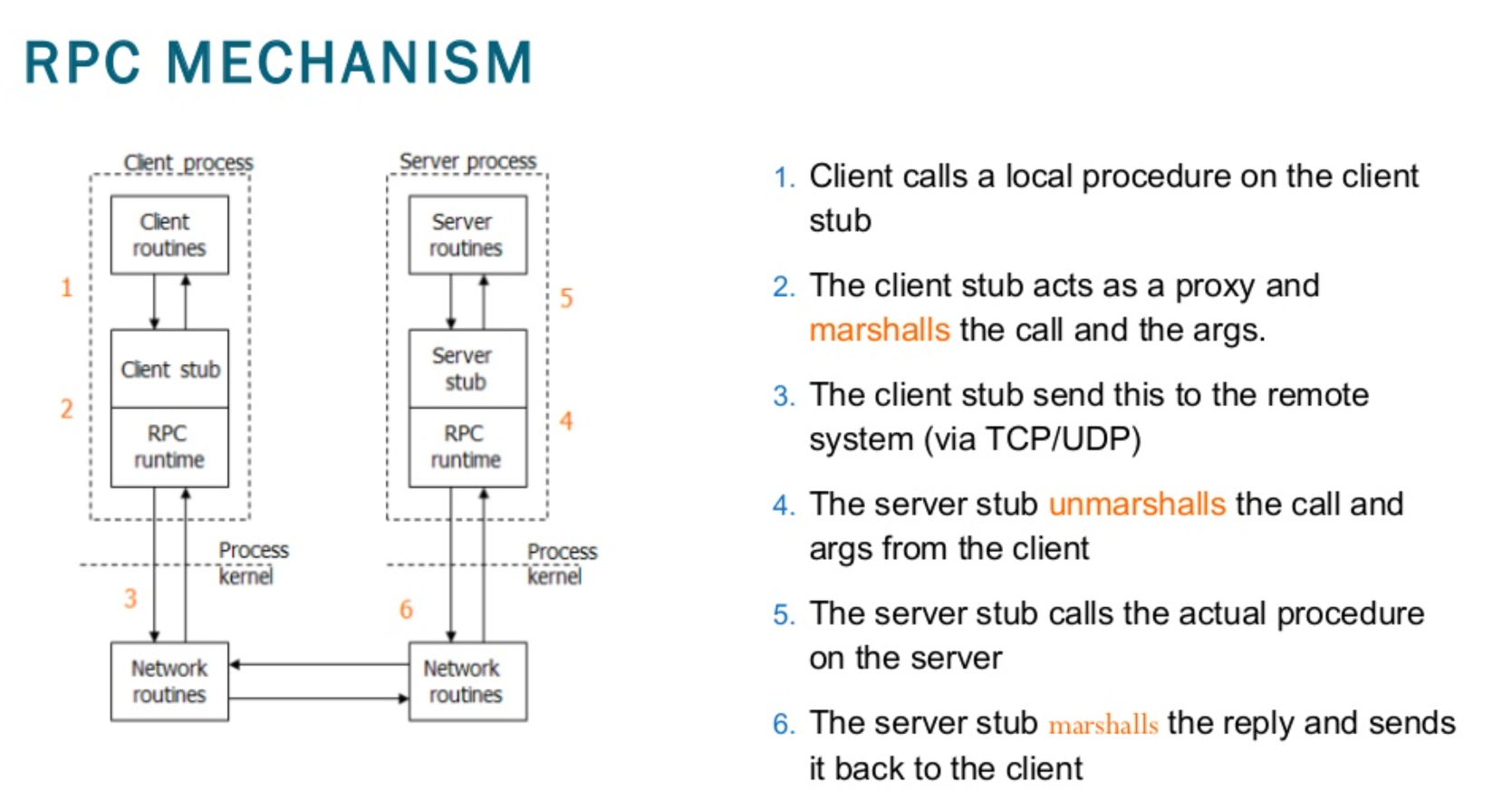RPC vs REST
REST
REST: (Resource) Representational State Transfer
- Resource: username, password, newsfeed, etc.
- Representational: JSON, XML, JPEG.
- State Transfer: POST, GET, PUT, DELETE (using HTTP verb).
6 architecture constrains
- Uniform interface
- Client-Server: The client application and server application MUST be able to evolve separately without any dependency on each other.
- Cacheable: In REST, caching shall be applied to resources when applicable, and then these resources MUST declare themselves cacheable. Caching can be implemented on the server or client-side.
- Stateless: The server will not store anything about the latest HTTP request the client made. It will treat every request as new. No session, no history.
- Layered system: REST allows you to use a layered system architecture where you deploy the APIs on server A, and store data on server B and authenticate requests in Server C, for example.
- Code on demand: Usually server returns static representations of resources in the form of XML or JSON. But when you need to, you are free to return executable code to support a part of your application.
RPC


- Remote procedure(function) call
- Runs on TCP/UDP
IMPORTANT: gRPC runs on HTTP/2
Lab
Goals
- Implement sample microservices using gRPC
- Deploy on K8S
Steps
- Implement the grpc service logic by following GRPC basic tutorial. The sample code is under repo
- Implement the grpc client logic, the sample code is under repo
- Create a kind cluster
kind create cluster --image kindest/node:v1.20.2 - Deploy both grpc-service and grpc-client on the kind cluster. The YAML examples under the Github repo mentioned above.